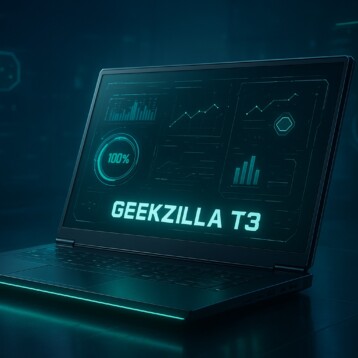|
Computers handle signals using electrons, but the majority of data communication outside the computer occurs via photons (used in fibre optics). Light cannot be easily influenced with electric fields, so the light signals must first be transformed into electrical signals by a photodiode. The received data is processed by a computer and then transformed back into light using a laser and other optical components – a very uneconomical method. Excitons, on the other hand, directly interrelate with electric fields, eliminating the need for all the conversion steps and creating a faster and more energy-efficient computing system.
As soon as photon signals enter the chip, they instantaneously transform into excitons. The exciton signal is handled by the circuit and immediately alters back into photons at the output. “You start with the photonic signal and end with the photonic signal,” says Leonid Butov, a physics professor at UC San Diego and author of the study.
The device Butov and his colleagues developed consisted of a number of exciton transistors on a specific gallium arsenide chip able to electronically route the exciton signal through one of three paths. The device is the first excitonic integrated circuit ever constructed. Excitons are delicate to use because they are exceedingly volatile, normally effective only for tens of picoseconds (a picosecond is one trillionth of a second). Butov and his group were able to lengthen the life of the exciton by preventing the electron and its hole from uniting. The chip includes thin layers of semiconductors called quantum wells. One well confines the holes, and another well, just nanometers away, confines the electrons. “Now [the exciton] lives on the order of 100 nanoseconds,” says Butov. “A lifetime long enough to perform all the necessary operations.”
|
Butov had to keep the electron and its hole detached; however, they had to be close enough to travel as a pair. An exciton whose electron is not attached to its hole is a neutral particle devoid of a built-in dipole moment, making it complicated to control with voltage signals. Nevertheless, an exciton where the electron and hole are disconnected but move collectively forms a dipole—one end positively charged, the other negatively charged. Due to this dipole, Butov was able to control the exciton with voltage.
These voltage gates build an energy bump that can cut short the movement of excitons. Once that energy barrier is separated, the exciton can travel to the transistor output and transform into light, which could then be fed directly into a communication circuit, removing the need to convert the signal. “Excitons are directly coupled to photons, which allows us to link computation and communication,” Butov said.
The scientists created simple integrated circuits by joining exciton transistors to form several types of switches that accurately direct signals along one or several pathways. Excitons are fast and the switches can be flipped quickly. So far switching times on the order of 200 picoseconds has been demonstrated by the researchers. While exciton computation itself may not be faster than electron-based circuits, the speed will come when sending signals to another machine or between different parts of a chip that are connected by an optical link.
Mainly because of the low temperatures required, excitonic integrated circuits are far from being ready for commercial use. Making a chip that can function at a higher temperature requires using a different semiconductor material than gallium arsenide. When using gallium arsenide at temperatures above 40 Kelvin electrons and holes won’t stay bound together in excitons, but other semiconductors have exciton-binding energies that could allow for higher-temperature exciton creation. Butov says the next steps will be to find semiconductor materials that will allow scientists to build a chip that runs at room temperature, and also in the future to make a more complex circuit.
TFOT has previously reported on Electron Traps that Compute; superimposed quantum dots which are able to “trap” single electrons. Created using a semiconductive material, energy in these dots can be influenced by lasers. This imperative result moves scientists another step closer to the creation of an ultimate quantum computer. TFOT also reported on new quasiparticles which have one quarter the charge of an electron. Quasiparticles are formed from the interactions of multi-particle systems and act effectively as independent particles. The special attribute quasiparticles have is that they may be the first step towards powerful and stable quantum computers. Another recently covered article by TFOT is titled “Illogical Secret of Superconductors”, which depicts the transformation of matter into a high-temperature superconductor; this is a process that has eluded scientists for over 20 years and one that seems to contradict logic. Its discovery may revolutionize the way we distribute electrical power, build electric cars, and construct super fast magnetic levitating trains.
More information on exciton transistors can be found at the University of California’s website.












